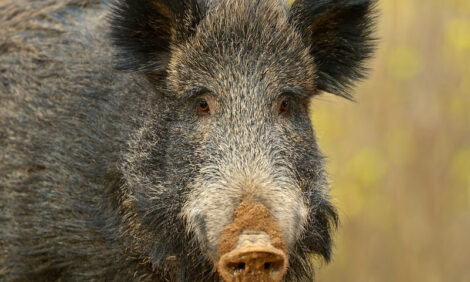



Japan confirms more cases of contagious swine fever
Aichi Prefectural Government announced today that additional swine fever cases have been confirmed in Seto and Tahara.According to a report published by the Japan Times, around 2,400 pigs will be slaughtered at the affected farms.
The latest outbreak of Classical swine fever (CSF) hit Toyota and Tahara in February, with another case confirmed in Seto on Wednesday (27 March). Neighbouring farms in Seto were also found to have two positive cases of CSF this week.
A second case in Tahara was confirmed this morning after pigs were reportedly dying. An on-site inspection discovered nine pigs testing positive for the disease.
The Aichi Government have announced that they will "make every effort" to prevent the spread of the disease.
Classical swine fever
Otherwise known as hog cholera, Classical swine fever is one of the most economically-damaging pandemic viral diseases of pigs in the world. CSF can affect pigs of any age and comes with high mortality rates. The key clinical signs include conjunctivitis; high fever; and heavy discharge from eyes and nose. This disease is notifiable – contact your vet and local authorities if you believe this disease is affecting your herd.
The virus that causes CSF varies in virulence. Some strains are highly virulent and cause acute (i.e. rapid) serious disease. Some strains are of low virulence and cause chronic (i.e. long-lasting) disease, others are intermediate causing sub-acute disease.
Acute disease
- Clinical signs usually appear first in a small number of growing pigs which show non-specific signs of depression, sleepiness, and reluctance to get up or to eat. If you get them up they may wander to the feeder but eat very little or nothing and wander away again to lie down. They walk and stand with their heads down and tails limp. Over the following few days these signs get worse and more pigs become affected.
- Younger piglets may appear chilled, shiver and huddle together.
- Initially affected pigs may appear to be constipated but this generally changes to a yellow-grey diarrhoea as the disease progresses. Early on some of the pigs may develop conjunctivitis (inflammation of the eye surface) with thin discharges. This gets worse, the discharge getting thicker with time until some of the eyelids are completely closed and adhered.
- A constant early sign, which persists throughout the disease until just before death, is a high fever, over 42ºC (107ºF). Check the sick pigs' rectal temperatures. If they are all high suspect CSF.
- As the disease progresses the affected pigs become very thin and weak and develop a staggering walk. Initially this is probably through weakness but later it is due to infection of and damage to the spinal nerves. Partial paralysis of the hind end results in a drunken walk and a tendency to fall to a sitting or lying position. Diarrhoea worsens and some pigs vomit a yellowish bile. The pigs' skins go purple, first over the ears and tail, followed by the snout, lower legs, belly and back. Affected pigs die in 10-20 days. Some pigs go into convulsions before death.
Visit The Pig Site Disease Problem Solver to assess the clinical signs present in your pigs.








